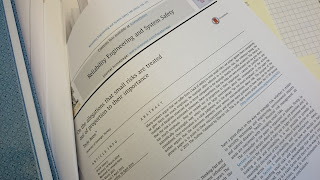On November 7 (2015) an unmanned remotely
operated vehicle (ROV) was found on the sea bed in the Baltic. It was found on
international water, but within the Swedish economic zone. What makes this
story extra juicy is that:
(1) the ROV was found not far from the gas pipeline Nord Stream going from Russia to Germany, and
(2) the ROV is carrying explosives.
This type of ROVs are often used in mine clearing operations (of new as well as old mines). In such operations the mine is first localized with sensor from afar and the detonated under controlled circumstances with dispensable ROVs like this one (used by many nations).
Unfortunately the Baltic is full of old WWII mines and unexploded ammunitions. Clearing mines in the Baltic (especially in the eastern part) is a long going tradition since Estonia, Latvia and Lithuania became independent states in the beginning of the nineties and the Swedish Navy has taken part at least since the mid nineties as an exercise with an important result. However, the exercise became more political as a result of the Ukraine crisis even though clearing WWII mines has only friendly implications.
The relative large extent of mine clearing over a long period of time in the Baltic makes it very possible that the now found ROV is a left over from such operations. Therefore, the most likely explanation is that the ROV is a result of peaceful intentions. However, I've seen discussion on the internet trying to make it out to be something else. The point of such discussions can be questioned!
(1) the ROV was found not far from the gas pipeline Nord Stream going from Russia to Germany, and
(2) the ROV is carrying explosives.
This type of ROVs are often used in mine clearing operations (of new as well as old mines). In such operations the mine is first localized with sensor from afar and the detonated under controlled circumstances with dispensable ROVs like this one (used by many nations).
Unfortunately the Baltic is full of old WWII mines and unexploded ammunitions. Clearing mines in the Baltic (especially in the eastern part) is a long going tradition since Estonia, Latvia and Lithuania became independent states in the beginning of the nineties and the Swedish Navy has taken part at least since the mid nineties as an exercise with an important result. However, the exercise became more political as a result of the Ukraine crisis even though clearing WWII mines has only friendly implications.
The relative large extent of mine clearing over a long period of time in the Baltic makes it very possible that the now found ROV is a left over from such operations. Therefore, the most likely explanation is that the ROV is a result of peaceful intentions. However, I've seen discussion on the internet trying to make it out to be something else. The point of such discussions can be questioned!





